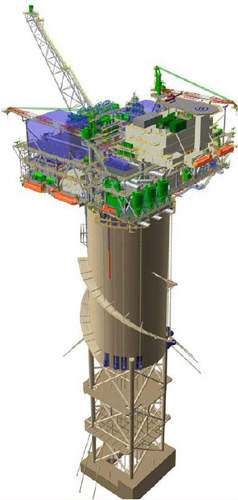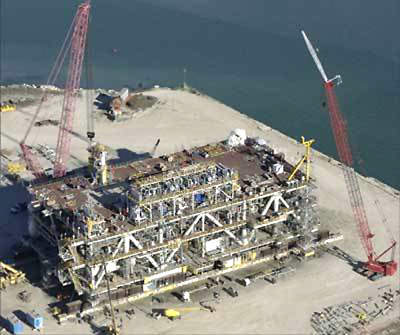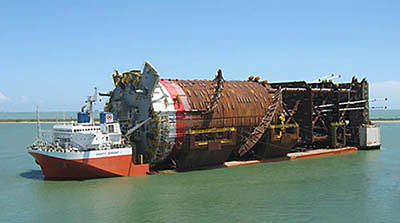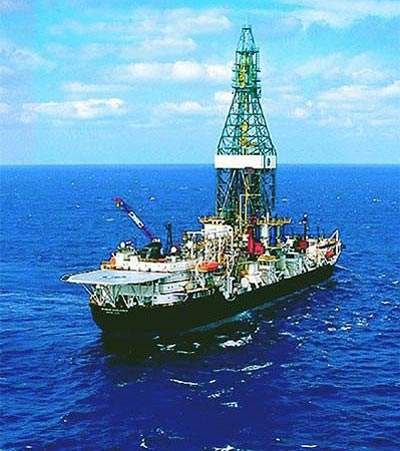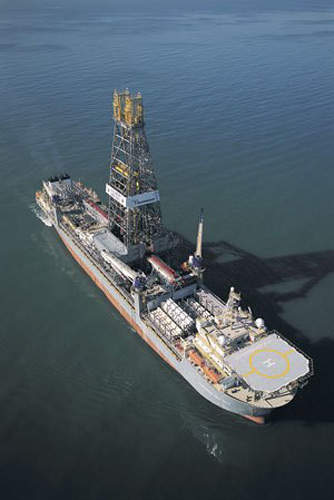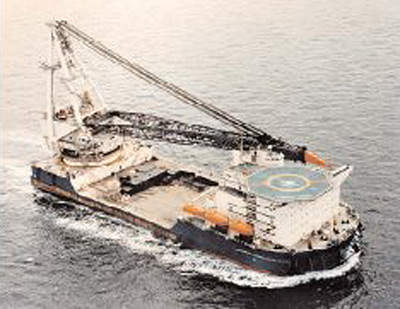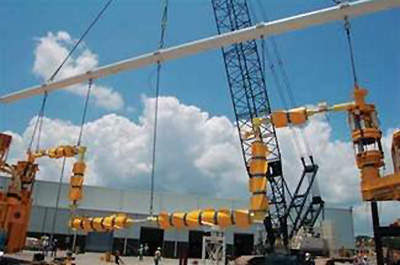Tahiti is located in the deepwater US Gulf of Mexico, approximately 190 miles (306km) south of New Orleans. It lies in Green Canyon blocks 596, 597, 640 and 641, in a water depth of approximately 4,200ft (1,280m). The field is operated by Chevron, which owns a 58% working interest, on behalf of Statoil (25%) and Total(17%).
The Phase-I development cost $2.7bn to Chevron. Crude oil production from the field began on 5 May 2009, with an estimated daily production of about 125,000 barrels of crude oil and 70 million ft³of natural gas by the end of 2009.
Chevron’s Strategic Decision Review Board meeting on 19 June 2007 decided to start Phase-II development of the Tahiti field. For the second phase Cameron was chosen to supply subsea production systems in an order worth $83m. The supply includes production control systems, connection systems, eight 15,000psi subsea trees, engineering and project management services, and related equipment. The deliveries, beginning in the last quarter of 2009, will be complete by 2012.
Chevron drilled the discovery well in Green Canyon Block 640 in 4,017ft water from the Transocean Sedco Forex Discoverer Deep Seas drill ship. The well reached TD of 28,411ft on 29 March 2002.
Tahiti was discovered in 2002 with a net pay zone of more than 400ft. Further appraisal drilling revealed oil columns up to 1,000ft of net pay in high-quality sandstone. The appraisal programme also confirmed that the reservoir in Tahiti extends over
a distance of three miles.
Two vertical appraisal wells with sidetracks were drilled in early 2003, in Green Canyon Blocks 596 and 640 that verified the potential at Tahiti. In early September 2004, Chevron (then ChevronTexaco) tested the discovery well at 25,812ft subsea,
confirming it as the deepest successful well test in the history of the Gulf of Mexico indicated that production from this well could be as much as 30,000bpd.
The well’s peak rate during the production test reached 15,000bpd. The development drilling programme was based on two drilling rigs – the Glomar Explorer and the Transocean Discoverer Deep Seas. The appraisal backed up original
estimates that the field holds 400 to 500 million barrels of recoverable oil reserves.
Tahiti field development
The field was developed from two subsea drill centres near the two Tahiti appraisal wells in Green Canyon blocks 596 and 640. They produced into a floating production facility supported by a truss spar.
This became the first spar with no drilling capability and no surface wellheads.
Technip Offshore performed Front-End Engineering and Design (FEED) for the spar, with Mustang Engineering undertaking the FEED for the topsides oil and gas-processing facilities.
Technip was subsequently awarded the engineering, procurement and construction contract for delivery of the spar hull and mooring systems. Chevron also awarded Technip the contract for the fabrication of the topsides modules.
The topsides facility was comprised of a 950t production module, 6,500t utility module and a 2,500t module support frame. It was supported by the Technip-designed deepwater spar hull that is approximately 170m long, with a diameter of 39m and a steel weight of approximately 24,000t. The Tahiti facility was expected to have the capacity to produce 125,000bpd of oil and 70mmscf/d of gas and treat 120,000bpd of produced water.
Technip fabricated the Tahiti hull and mooring systems at its yard in Pori, Finland, while the topside modules were fabricated by Technip’s Corpus Christi, Texas by subsidiary Gulf Marine Fabricators.
Chevron let a contract to a J Ray McDermott for installation of infield flowlines, associated pipeline connections and Steel Catenary Risers (SCRs). McDermott installed two 6in and four 9in flowlines with associated Pipeline End Terminations (PLETs) static flowline segments and in-line buoyancy. The Derrick Barge 50 performed the work.
In mid-2007, the project received a setback when Chevron’s contractor discovered a metallurgical problem with shackles used to connect various components of a mooring line together. Mooring lines connect the spar to pile anchors on the sea floor. The setback delayed the project.
RFM programme
The production is analysed by a riser and flowline monitoring (RFM) programme carried out by 2H Offshore.
This was an industry first and all the subsea sensors, electronics systems, and communication cables are configured with double redundancy. 2H has been providing riser monitoring instrumentation for production riser hang-off and touchdown regions and strain and motion measurements. The flowline monitoring system measures flowline buckling shape, local temperature, and hoop and axial
strain.
The high-tech online steel catenary riser monitoring system gathers riser response information at 10Hz frequency, processes it in real time, and provides feedback to the Tahiti controls systems.

